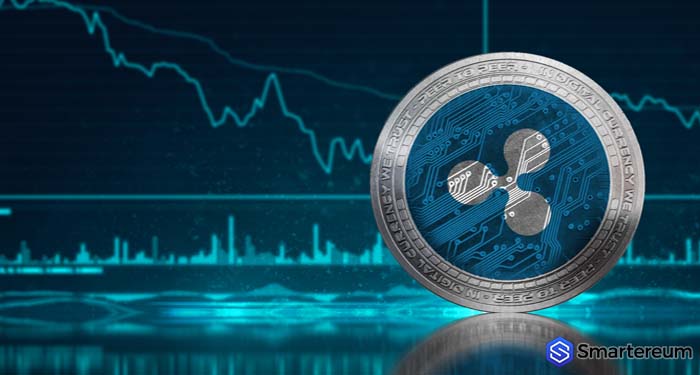


One of the Spanish banking giants Santander’s UK help desk said that they use XRP (XRP) to send money to nineteen countries which United States is included.
The Spanish banking giant announced the launch of One Pay FX in April last year. One Pay FX is Santander’s blockchain-based cross-border settlements service for retail customers. But during the announcement of the product, Santander said the mobile app uses the xCurrent product of Ripple. The xCurrent product of Ripple is not based on XRP (XRP), so it doesn’t use XRP tokens.
The product of Ripple that uses XRP (XRP) to process transactions is xRapid. This product was not even ready for mainstream use as of April last year. After the launch of xRapid, Ripple announced that those using xCurrent could easily switch to xRapid – which does use XRP. The firm made this announcement in November last year.
Until this moment, no xCurrent customer has started using xRapid, as they have not made any announcement regarding the switch. In an interview with CoinDesk, Asheesh Birla – the senior vice president of product at Ripple – described the new option.
Birla said: “What this release allows you to do is that in countries where you think it is appropriate and xRapid is available, using your xCurrent software, you can now plug into on-demand liquidity using xRapid.”
XRP price prediction 2019
XRP (XRP) Price Today – XRP / USD
At the time of writing, XRP (XRP) is changing hands at 30 cents after a decrease of about one percent over the past twenty-four hours. The current market cap of the digital currency is $12.79 billion. The trade volume of the digital currency over the past twenty-four hours is $1.23 billion.
xRapid May Not Be Available for Clients in the US
Ripple’s vice president of product also stated that xRapid might not be available for adoption in nations such as the US. The reason is that regulatory clarity on digital currencies is still somewhat vague in the country. He added that:
“In countries where there is not good regulatory clarity or digital asset infrastructure, you have to continue using xCurrent as-is, with fiat liquidity.”
If the Spanish banking giant is now using xRapid, that means Ripple is likely to make an announcement soon. Until they make the announcement, Euro Exim Bank is still the only bank that has confirmed it is using xRapid for international settlements.
What Is Ripple (XRP)?
Founded in 2012, the San-Francisco based FinTech company Ripple is a veteran in the blockchain industry.
Aiming to improve financial transactions between banks by making them faster, cheaper and more reliable, Ripple has already managed to attract large financial institutions to the Ripple network, including Santander, BBVA and RBC. Just recently, Ripple made another large step in its expansion in Asia by announcing the plans for a new office in Singapore, today’s Asian hub for FinTech innovation. With a seasoned leadership team and the ever growing Ripple network, Ripple’s prospects look promising.
Although Ripple offers a disruptive solution for a real problem, a large group of individual blockchain investors hold a grudge against the company. The major problem the blockchain community seems to have with Ripple is the fact that is completely centralized and that they’re aiming to boost efficiency for the global financial system. This is contrary to the beliefs of the die-hard blockchain community that wants to circumvent this (in their opinion) untrustworthy and irresponsible industry bu using cryptocurrencies and blockchain.
Ripple’s sole purpose is to make transactions between financial institutions more efficient and has repeatedly stated that they’re not interested in facilitating transactions between individuals.
Ripple Inc. has some products that power cross-border payments. Some of the payment protocols include xCurrent, xVia, RippleNet, and xRapid. xRapid, which is the latest product of the firm, uses XRP (XRP) to process cross-border transactions. RippleNet and xCurrent are presently the highest used products of the firm. A lot of banks and financial institutions across the globe use them. However, the adoption of xRapid is also on the rise.
What Does Ripple Do?
Currently, our global banking system experiences numerous frustrations when making international financial transactions. We, as the bank’s clients, experience this when we transfer funds to parties in other countries as this can take 3 to 5 days. Taking a plane with a bag of money is still faster than most international transactions.
However, we only experience a fraction of the issues with these transactions; the majority of these problems are faced by banks. Because financial transactions tend to go through multiple middlemen, there is high failure rate, the process is costly and slow, and there is no coherent global network or structure for these transaction. Ripple aspires to make this process incredibly efficient by using blockchain technology and their own cryptocurrency, XRP.
Ripple’s blockchain is currently one of the fastest in the crypto space, with a transaction speed of only 4 seconds. To illustrate how fast this actually is, transactions on the Ethereum blockchain take over 2 minutes and Bitcoin takes over an hour to send around.
Adding the fact that both of the latter are facing scalability issues, Ripple definitely is the most efficient transactional cryptocurrency of the three. Moreover, Ripple is scalable in case the number of transactions increase too fast. Currently it can handle 1,500 transactions per second.
XRP, Ripple’s cryptocurrency, functions as the digital asset through which international transactions are facilitated. You can see XRP as a bridge currency.
Here’s how it works. Bank A wants to send Bank B $1,000,000. Instead of sending the money around, Bank A will buy an amount of XRP that’s worth $1,000,000 and send this to Bank B’s institutional Ripple wallet. Bank B will convert this to the currency they operate in and the transaction is settled within minutes. Banks will not have to buy and sell XRP on an exchange, but will have private access to Ripple’s transaction network.
XRP’s Unique Price Determinants
Besides the enormous increase in transaction speed Ripple offers, the cost of these transactions are extraordinarily low and will be paid in XRP. This is done by destroying a very small percentage of the XRP sent and received. The XRP ledger is an open-source product created by Ripple.
This means that the cryptocurrency is subject to deflation, as there are less and less total coins around with every transaction conducted. Therefore the price would increase with every transaction, though it will be barely noticeable in the short run. However, when you are thinking long-term this is something to take into account.
Nonetheless, there is one major problem with the amount of XRP in circulation and its price. The amount currently in circulation is only 38% of the total XRP created. At the moment, Ripple still owns 62% of their XRP themselves, which is one of the main concerns of individual investors.
Banks demand a stable price in order to properly conduct financial transactions and it has been suggested that this is the reason why Ripple is doing this. However, the real reason for this has not yet been officially given.
The Team and the Ripple Network
While screening the Ripple management team, it’s hard not to become impressed by their years of experience in a multitude of industries, mainly focused on FinTech and the financial sector.
The resume of its CEO, Brad Garlinghouse, is a good representation of this. He has worked at Yahoo as the SVP of communications, filled several board positions and was the CEO of Hightail. Interestingly enough, the global head of strategic accounts, Marcus Treacher, used to be on the board of SWIFT, the market leader in the industry Ripple is trying to penetrate.
Besides the seasoned leadership, Ripple currently has over 160 employees, making it one of biggest blockchain employers. Looking at the growth of Ripple and the combined experience of its upper management, the team seems rock solid.
A number of large financial institutions are already members of the Ripple network and the size of the network continues to increase on a regular basis. Well-known banks like Santander, Reisebank and RBC are examples of these large members of the network.
Besides the network, Ripple has some respected investors looking out for its future too. The venture capital investment group of Google supports Ripple financially, as do Accenture, Andreessen Horowitz and Seagate. With backing like this, you can tell it’s serious business.
Ripple Controversy
Blockchain investors have quite opposing opinions concerning Ripple. It seems like you either love or hate it. Why people love it is quite simple: it offers a proven solution for a real and global problem. However, the dislike of Ripple and its operations does have some substance.
The first argument against Ripple is that the company still owns 62% of all XRP. The real reason for this is still unclear but it puts Ripple in a position in which they can easily manipulate the price to their liking. Another issue with Ripple is that it’s centralized. This angers a lot of blockchain enthusiasts as blockchain is a way to decentralise the world, letting no one party control all data and accounts.
Be that as it may, it makes sense that a cryptocurrency facilitating bank-to-bank transactions is centralized as banks like control and accessibility to the history of all transactions. This does oppose anonymity and ownership of your own information, which is a key feature that most of the popular financial transaction crypto’s share.
Finally, the most widespread argument against Ripple is that they cooperate with the “enemies” of blockchain ideology: governments and financial systems. Employing blockchain technology for exactly the opposite of what, for example, Bitcoin stands for (namely, no central powerhouses and more control and privacy) has created a serious dislike for Ripple, no matter how useful their technology is.
To Invest XRP or Not to Invest XRP? Should You Invest in XRP?
All in all, Ripple and their XRP cryptocurrency are subject to a great deal of argument both in favor of and against. it However, their target market and technology are solid.
Betting against the banks never seems like a good idea, but heavy competition is to be expected. Why would banks use the cryptocurrency of an external company when they are able to create their own blockchain internally? Visa simply can’t be ignored when talking about financial transactions between banks and it’s unlikely that they will not come up with a counter strategy.
Nonetheless, the Ripple network is impressive and expanding. The highly skilled leadership gives confidence to a sound vision and strategy. Price manipulation may occur and there are plenty of committed naysayers to Ripple, but who needs individual investors when you have the support of big players in the financial system.
Where Can You Buy and Store XRP?
You can buy Ripple at many of the most popular cryptocurrency exchanges such as Bittrex, Kraken, and Binance. You could also any brokerage platforms such as Changelly.
If you want to hold XRP for the long term, we recommend using a hardware wallet such as the Ledger Nano S or one that supports XRP.
Hard wallets are generally much safer because they’re offline and have better security than exchange and other online wallets. However, they aren’t ideal for someone trading frequently. Source: investinblockchain
Find All Monero Price News, Binance Exchange, Ripple XRP News, Binance Price Prediction, Goldman Sachs Cryptocurrency, Evx Coin News, Bitcoin Stock Price, DogeCoin News, XRP USD Tradinview, Ripple Coin News in Smartereum.com
Carolyn Coley is a blockchain reporter. She joined Smartereum after graduating from UC Berkeley in 2018.









